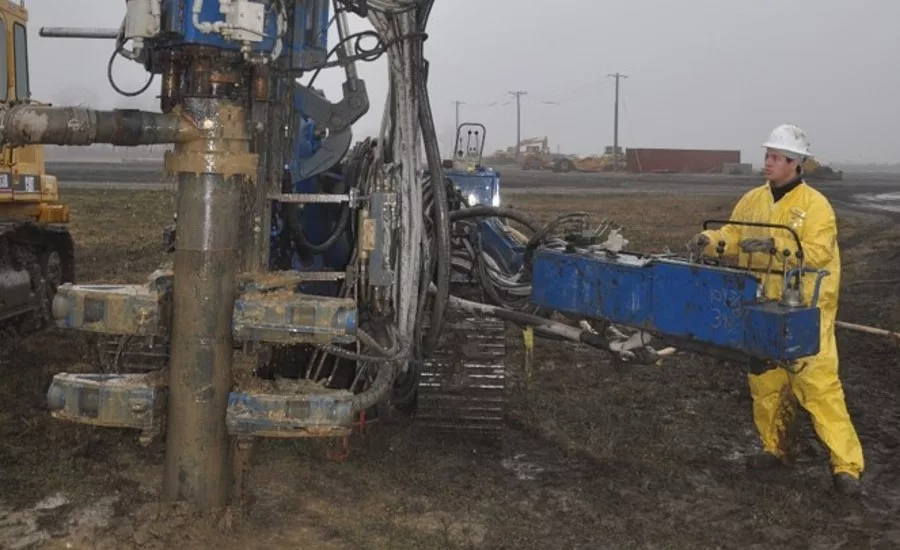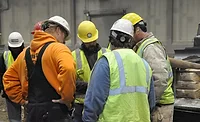How Can We Make Drill Training More Relevant?
Drillers, Manufacturers Both Benefit from Coordinated Continuing Ed

Columnist Dave Bowers says everyone benefits from direct, hands-on training. That includes drillers and helpers, manufacturers and suppliers, and facilities like ASIP that can bring it all together.
Source: Dave Bowers

The Apprentice and Skill Improvement Program that Bowers works for has relationships with several manufacturers and suppliers to provide equipment and training to meet job needs in the market.
Source: Dave Bowers
Last month, I talked about training and collaborating with subject matter experts from industry to improve training. This month, I would like to talk about the necessity for that training to be on relevant equipment.
For some companies, training on “relevant” equipment is a no-brainer: They use their own. However, having all of your capital equipment utilized on jobsites can complicate things. On top of that, crews work with this equipment every day. Many times, the uniqueness of an upcoming job demands additional training. Dedicated training programs step in to help employers with that kind of specialized training.
I have been blessed to be a part of one such program for the last 12 years. The advantage of the Apprentice and Skill Improvement Program (ASIP), and other programs like it, lies in looking at the types of work coming up in an area and offering training specifically suited to that work. Often, this upcoming work may involve equipment companies cannot free up, or don’t have available. Good relationships with suppliers and manufacturers help. We’ve worked with many who see the value of hands-on training with their equipment and classroom-related instruction in a controlled setting.
This training model gets the manufacturers’ equipment in front of end users, which drives sales. In turn, this gets the end user familiar with new technologies or features used on upcoming jobs. Both things make for a more efficient workforce, which leads to more profits for our company owners.
How do we bring in all this specialty equipment for jobs not even awarded yet? The cost can be high but, as a 501(c)3 non-profit, our facility can offer manufacturers and suppliers tax write offs for the costs of any donated or rented equipment. Manufacturers donate equipment for courses, periods of time or even, on rare occasion, outright to the facility for the sake of training workers. Suppliers in our industry value preparing our work force for that next big thing, or just readying the next generation to fill in when the aging workforce of drillers gets to hang up their boots for good. It gives them a steady stream of potential new customers.
When I’ve reached out to companies and made them aware of needs our program might have, I’ve had a lot of success getting them to provide capital equipment to fill a specific training need. For example, recently a change in contract language led to a need for more micropile, soil nail and tieback drillers and helpers in our area. I reached out to Troy Chipps, CEO of Eijkelkamp North America. We arranged for our facility to use a multipurpose sonic foundation drill rig for four months a year — two in the summer and two in the winter — to help fill this need. Likewise, a hands-on driller training program cannot run without fluids. During a training with Western Michigan University this summer, one of the alums helping was Chris Bower, business development for Bentonite Performance Minerals, a Halliburton Company. He inquired about where we got our fluids. After a brief conversation, he said he would see if his former employer Bariod IDP could help to reduce our costs. Thanks to his hard work and the generosity of Baroid IDP we now are getting our fluids at no cost as long as we include their local representative in our training.
Over the years many manufacturers, suppliers and contractors have helped support our training. Mobile Drill International discounted a newer refurbished geotechnical drill. Illini Hi-Reach donated forklifts for an especially busy training season. Stalworth Underground donated a Soilmec caisson drill rig for numerous classes. Gefco, when developing their solids control unit, lent one to use to run mud schools. That helped us fill a need for workers on a few large HDD projects utilizing reclaimers running around the clock. As written about in last month’s article, Franklin Electric donated a lineshaft turbine pump and hole assembly, as well as control units and classroom aids. They also provided subject matter experts for instruction. Rex Penry provided two Rockit bits of different sizes — without us asking — after he appeared on the “Brock and Dave Drillercast” podcast.
I bring this up not to say “look what we have,” but to illustrate the commitment to quality training of our industry partners. When I talk to people at national shows about our training program, I consistently hear, “That’s exactly what this industry needs.” We have so few dedicated training programs available to workers entering the drilling industry that employers rarely find someone has gone through one.
In an industry so desperate for quality hands-on training why, when we go to national shows, have such limited opportunities for hands-on training? I know manufacturers want to do hands-on training. The generosity shown to our program proves it. I believe we, as an industry, simply have not pushed for better options in conjunction with national shows.
This came up on a recent episode of “Brock and Dave’s Drillercast.” We think most industry trainers would welcome the opportunity to conduct a three- to four-day school prior two the national show. We know the industry would welcome the chance to go to the show and get a more focused training. The foundations industry uses a similar training idea, the ADSC’s Drill Rig Operator School, held every three years add a different location. Multiple brands bring equipment and trainers to the school to provide hands-on training. Why couldn't the water well and geotechnical drilling industries also run similar types of trainings? If these types of programs were held in conjunction with the NGWA and NDA shows, I believe it would boost both attendance and the quality of the content delivered.
Just my two cents. If you agree, contact your manufacturer of choice and ask if they would support this idea. Hoping to see you at a live training soon.
Keep turning to the right until next time.Looking for a reprint of this article?
From high-res PDFs to custom plaques, order your copy today!




